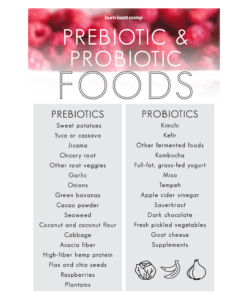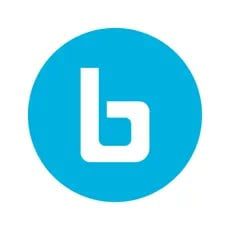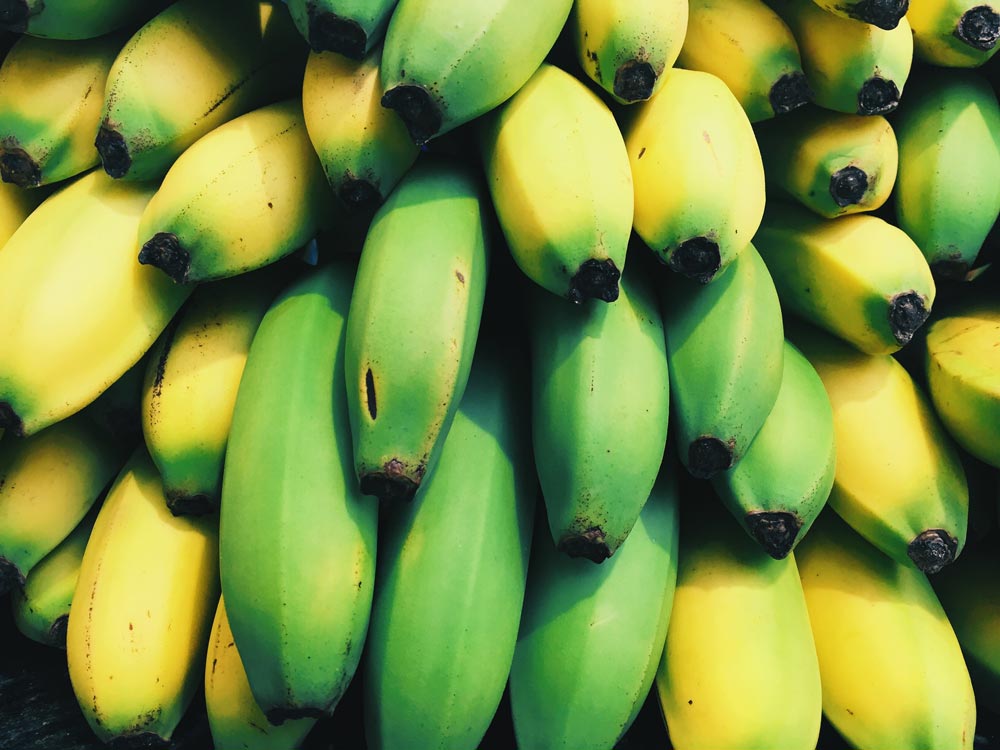You carry 3 to 5 pounds of bacteria in your gut. That is over 100 trillion bugs living in your gut—how crazy is that? Your gut hosts both good and bad bacteria, and the one that is predominant determines not only the state of your gut health but also the state of your overall health. More and more doctors are making the connection between poor gut health and other health issues, realizing that most disease and ailments stem from the gut.
To take control of your gut health, you have to work on repopulating your gut with good bacteria as well as providing that good bacteria with an environment it can thrive in. Introducing prebiotics and probiotics into your diet is a great place to start.
Probiotics are the actual bacteria in your gut, and prebiotics are what the probiotics—or gut bacteria—live on. A simple way to look at the two is by imagining probiotics as seeds and prebiotics as soil.
So which is more important: prebiotics or probiotics? Herbalist and wellness practitioner Rachelle Robinette says, “You can make the case that prebiotics are more important because if you take probiotics but there is nothing in your gut microbiome to sustain their wellbeing, they will die very quickly.” Ultimately, consuming probiotics without prebiotics is like planting a seed in dried-up soil.
How do you add prebiotics to your diet?
Prebiotics are found in fibrous foods. Therefore, more fiber in your diet equals more prebiotics. The best way to ensure you are consuming enough prebiotics daily is by tracking your fiber intake, just as you might track your carbohydrate, protein or fat intake. If you consume at least 30 grams of fiber a day, more likely than not, you will be eating enough prebiotics to feed the good bacteria in your gut. 30 grams is a great starting point, but don’t be afraid to build from there. “There has been research on people who have eaten 100 grams of fiber a day and they have shown to have extremely diverse gut flora (good gut bacteria),” shares Rachelle.
How do you include more fibrous, prebiotic-rich foods into your diet? “I am a fan of high-fiber smoothies; it’s a simple way to boost your intake. Acacia fiber, dandelion root powder, high-fiber hemp protein, flax seeds, chia seeds, raspberries and plantains are all great high-fiber, prebiotic-rich options to blend into your protein smoothies,” says Rachelle. “You may find getting enough fiber each day is difficult at first, but if you make small swaps in your diet, it can easily be met. For example, if you eat raspberries instead of strawberries, you can increase your fiber intake by 10 grams.”
Some other great options include root vegetables (especially sweet potatoes, yuca or cassava and jicama), chicory root, garlic, onions, green bananas, cacao powder, seaweed, coconut, coconut flour and cabbage.

How do you add probiotics to your diet?
While it’s common to supplement with probiotics, you can also add probiotic-rich foods to your diet to boost your intake. Probiotic-rich foods include many fermented foods, such as kimchi, kombucha, miso, tempeh, kefir, apple cider vinegar, sauerkraut (not canned—the raw, unpasteurized kind from the refrigerated section of the grocery store) goat cheese and full-fat, grass-fed yogurt.
Probiotic supplements can also be extremely beneficial, but it can be overwhelming to figure out which probiotics actually work and which ones are a waste of money because there are many varieties out there. Dr. Mark Hyman, a physician and best-selling author, says, “When shopping for a probiotic, look for one with at least 25 to 50 billion living CFUs (colony-forming units), including the most beneficial strains like bifidobacterium bifidum, bifidobacterium longum, bifidobacterium breve, lactobacillus acidophilus, lactobacillus rhamnosus and lactobacillus bulgaricus.”
The United States does not have any federal regulations or standards for probiotic supplements, which means it’s possible to purchase ones that either do not actually contain the strains of bacteria stated on the label or, even worse, contain strains that are no longer alive. This makes it extremely important to research different brands prior to purchasing to see if there is any evidence-backed data supporting the effectiveness of the product. Dr. Mark Hyman recommends the brands Align, Culturelle and Florastor.
Will consuming prebiotics and probiotics heal your gut?
While prebiotics and probiotics are essential for a well-functioning gut, there are many everyday exposures, lifestyle habits and gut-damaging foods that you must avoid as well. To learn more about what you can do to heal your gut, listen to Coffee & Kettlebells Episode 25: Is Your Gut Healthy? Why It Matters and How to Fix It with Dr. Jennifer Noonan as well as Episode 51: Becoming Metabolically Fit with Primal Health Coach Courtney Bursich.


